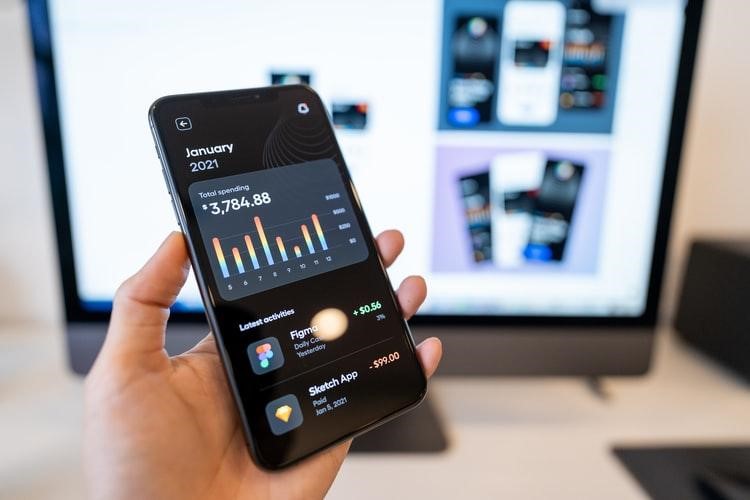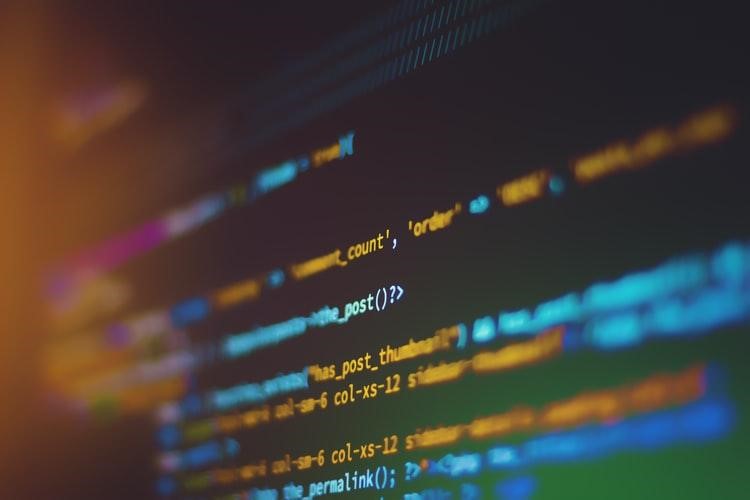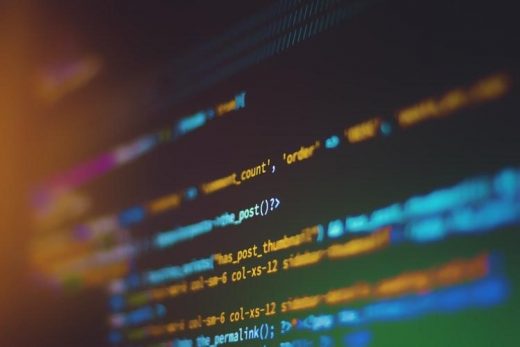The Costs of Developing An App in 2021
The Costs of Developing An App in 2021
There are apps that cover almost every aspect of our lives from on-demand services, to fitness apps that help us track health and fitness achievements. In 2017, mobile app consumer spending in the US reached no less than 17.5 billion U.S. dollars. And in the coming 2022, American users are projected to spend over 34 billion U.S. dollars on mobile apps via app stores.
So, it’s no surprise that businesses want to join this smartphone-crazed era and directly communicate with the customer via applications.
Investing in an app may seem like a good idea, but what are the exact costs of building an application? That is the top-one question in our chart of the most frequently asked questions. In a word, prices can vary from $3,000-$300,000. Quite a big cleft, isn’t it? Let’s find out what comprises the development cost and how you can guesstimate the investment expenses.

Cost evaluation for your app: Step-by-step
When we’re talking about app creation, the old saying ‘you get what you pay for’ applies to that as well. Therefore, there isn’t a fixed price for building an application. To get at least a rough estimate, you have to define your business logic, core functionality, location, and other important factors.
You can find out more about the numbers in our How Much Does It Cost To Make An App article.
Right now, let us tell you about the five essential steps that will help you estimate your future mobile app’s costs.
Get a free quote
To estimate an initial ballpark price, contact a development company and tell about your business objectives and specific needs.
Choose a mobile platform/mobile platforms
The market share ratios of iOS and Android are almost equal, hence a “run-once-run-everywhere” solution might seem like the most cost-effective option. But when you look into the question, you’ll see that the catch is hidden in the details.
Define the app functionality
To evolve your idea into a successful app, mobile engineers and BAs need a set of specific app features.
Select the main features within an MVP to avoid overspending
You don’t need to spend your budget dollars on all features at once to test your idea. At this stage, mobile developers choose only the essential functionality to check your hypothesis using an MVP.
Ask for an estimate of the app’s main features
After presenting the core functionality, the development team should provide you with an accurate price of your must-have features.

Cost evaluation for your app: core features
You don’t need a Mathematics degree to crack a simple formula – more features equal more resources. That is the main reason we’ve collected a set of core app features and dumped them up in a succinct table to help you navigate the terrain and spare some budget dollars.
|
Feature |
Description |
Tech stack |
Total of hours |
|
User login |
Login creates a user account, making users uniquely identifiable with the application. Logins add to the persistence of data and put a face behind it, which makes this feature an absolute must-have for any app. To ease the registration process and retain users, make sure to implement a social login, using a sign in through social media accounts. |
Facebook SDK Log In with Twitter Instagram Basic Display API |
5+ hours for UI/UX design 9+ hours to develop the app back-end 9+ hours for feature integration per each platform (iOS, Android) |
|
Push notifications |
Push notifications are short messages that a web resource sends to its subscribers. Such notifications return the user to the site he or she has already visited, while providing convenience and value to the user. Mind that every push notification should be segmented and fine-tuned to the end user. |
Firebase Cloud Messaging (FCM) for Android mobile apps Apple Push Notification Service (APNS) for iOS |
24+ hours (the number stays the same for iOS and Android apps) |
|
Navigation bar |
Navigation bar is a section of a graphical UI designed to assist visitors in accessing information. This element also helps users to go back and forth between the screens and take actions within the application. Thus, all icons should be easily recognisable and visible. |
Human Interface Guidelines |
From 24+ hours for the app back-end From 16+ hours for Android or iOS development |
|
Media content sharing |
Media sharing feature is inescapable if you want to build a social media application. It refers to media files sharing, editing capabilities, and others. |
Android NDK Native APIs for Android apps Core Audio Kit for audio exchange, PhotoKit for photo editing, and AVKit for media playback on iOS devices |
From 8+ hours for the design From 16+ hours for the front-end From 40+ hours for the back-end From 40+ to add this function on each mobile platform |
|
Geolocation |
Location-based apps constitute a lion’s share of the whole app market. This feature has become a staple for on-call services, weather forecasts, fitness apps, and social dating services. Various industries have been benefiting from geolocation, so you should definitely consider this feature as well. |
Google Maps API |
8+ hours for the design 8+ hours for back-end 8+ hours for Android and the same number for iOS applications |
|
In-app messaging |
In-app messaging is a type of internal notifications that are sent to users when they’re navigating the app. It’s a go-to feature for retail, social media, and real estate applications. |
Facebook API Telegram API |
From 40+ hours to implement the messaging platform back-end From 20+ hours to add messaging features to Android or iOS applications. |
But the expenses do not end there. Among other things, you should include other development costs such as back-end architecture, design, testing, and others. The total number of hours for these processes equals 500+ hours.
To sum it up, it will cost you around $15-40k to build a simple application with a standard set of features. But there is one trick that can help you save a pretty penny and validate your business idea. Yes, you guessed it right – prioritizing features to implement into your mobile app MVP. We’ll share more details further in the article.
But before that, let’s find out how app complexity can ramp up or truncate the app development costs.
App complexity to influence the costs
To vividly demonstrate how development costs can go up and down based on the app complexity, we grouped mobile apps into three categories and included the expected time in hours.
|
Simple |
No API integration No back-end Standard UI components Simple features (login, email integration, mailbox, etc.) |
From 400+ hours |
|
Moderate |
Custom UI/UX features Build-in payment gateway API integration Back-end server |
From 500-800+ hours |
|
Complex |
Multi-language support Third-party integrations Custom animations Advanced back-end Custom UI/UX design Real-time features via database integration |
800-1500 + hours |
Also, we cannot skip such an important aspect as the hourly developer rate. Logically, it plays a huge role in cost estimation. Developer hourly remuneration varies greatly based on the location.
The average developer rates vary across the globe depending on the location, seniority level, technology stack, and other factors. Thus, the US is among the most high-paying tech hubs, whereas Eastern European mobile app developers are well known for modest charges and quality work. The price-value ratio is completely up to you.
How to plan a Minimum Viable Product For Your App
Step 1. Make a product vision statement
The Product vision refers to the product goal, the objective with which the Product is being made, and what kind of users it is going to cater to. Also, the Product vision should include long-term success metrics and a future product state. Vision statements are ambitious and articulate vividly where the product aims to go and what it aspires to score in the long term. Later on, this statement will serve as a guide to all stakeholders.
Step 2. Feature prioritization
To hand-pick your MVP features, you need to address the following questions:
- Who is my target audience?
- What are their biggest issues?
- How will my product solve these issues?
- What are the killer features to cure these issues?
There are some time-proven methodologies that can help you hand-pick the most effective features for your project.
The first approach goes under the name of the MoSCoW method. The abbreviation stands for – Must have, Should have, Could have, Won’t have. This popular prioritization technique allows key stakeholders to understand the significance of each feature by grouping it into four categories.
- Must have – these are the most vital things your project cannot function without.
- Should have – these are still important features, but not as essential as the first category.
- Could have – the nice to have functionality that will not be implemented into your MVP.
- Won’t have – features of little to no values.
The Kano Model is another method traditionally used to categorize customer preferences into 5 categories and demonstrate how they relate to customer satisfaction.
You can perform a qualitative analysis of your app’s features by grouping them into particular categories – basic, performance, attractive, unimportant, and undesired features.
Step 3. Post-launch activities for your MVP
At this stage, you and your dev team will compile a list of possible features to add next. Based on your KPIs and user feedback, you can fine-tune the functionality to better address the users’ needs.
Wrap Up
As you see, you won’t find a clear-cut answer or cut-and-dried formula for guestimating the development costs.. The main reason for that is simple – all applications are geared towards different business objectives and particular users. Also, different mobile apps benefit from particular third-party integration and feature unique functionality.
About the Author: Tatsiana Isakova
Author’s bio: Tatsiana Isakova is a Belarus-based content writer who authors in-depth industry insights, opinion pieces as well as reviews, and blog posts at The App Solutions. Tatsiana loves to stay au courant with tech trends which helps pack her copies with value and relevance.
(42)


